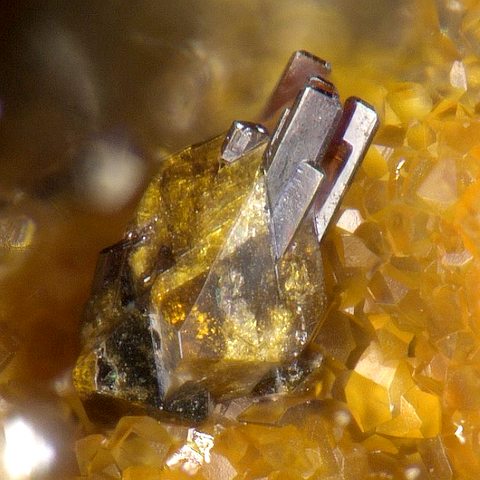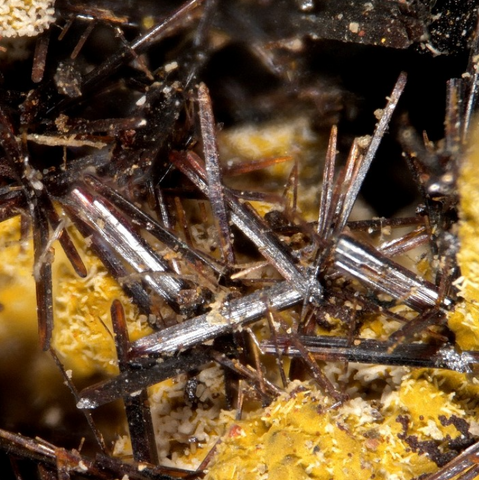BRACKEBUSCHITE
Class : Phosphates, arsenates, vanadates
Subclass : Hydrated vanadates
Crystal system : Monoclinic
Chemistry : Pb2(Mn,Fe)(VO4)2(OH)
Rarity : Very rare
Brackebuschite is a rare vanadate of lead, iron and manganese. It is a secondary mineral of the oxidation zone of hydrothermal lead and zinc deposits, with a dark brown to black color. Its name was given to it in honor of Ludwig Brackebush, professor of mineralogy at the University of Cordoba in Argentina, who was the first to describe this mineral. It occurs in small striated needle-like crystals, sometimes lamellar, of 1.5 mm at most, frequently grouped in tufts, dendrites or botryoidal masses. It is an attendant of descloizite and vanadinite, two other more common vanadates.
Main photo : Brackebuschite from Venus Mine, Cordoba, Argentina © Stephan Wolfsried
Brackebuschite in the World
Twinning
No known twin for this mineral species.
Fakes and treatments
No fake inventories for this mineral species.
Hardness : 4 to 5
Density : 6.05
Fracture : Sub-conchoidal
Trace : Yellow
TP : Translucent to opaque
RI : 2.280 to 2.490
Birefringence : 0.021
Optical character : Biaxial +
Pleochroism : Visible
Fluorescence : None
Solubility : -
Magnetism : None
Radioactivity : None





